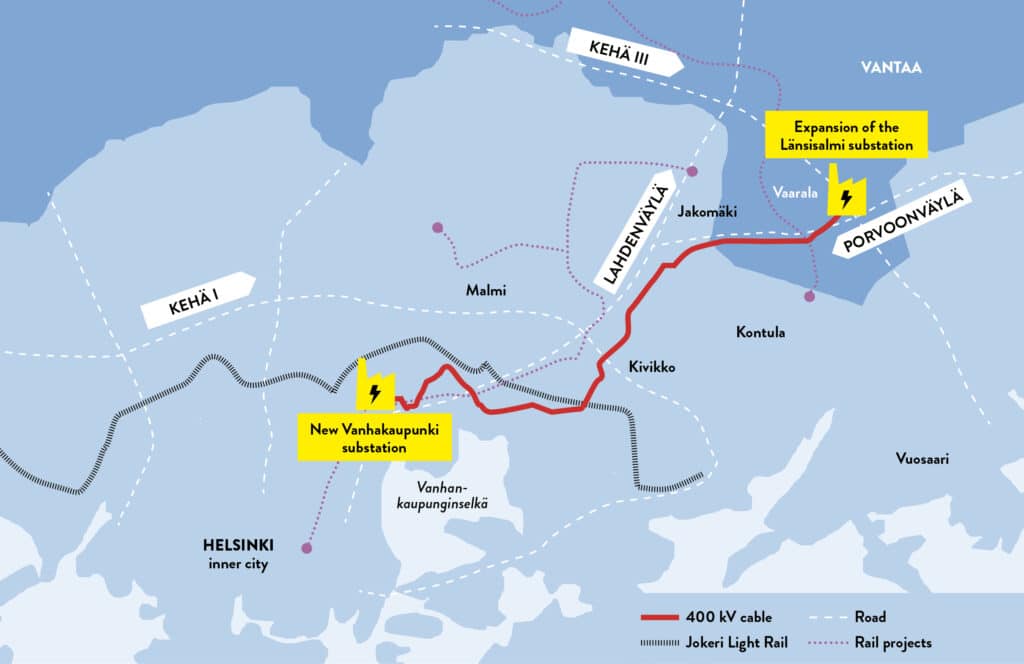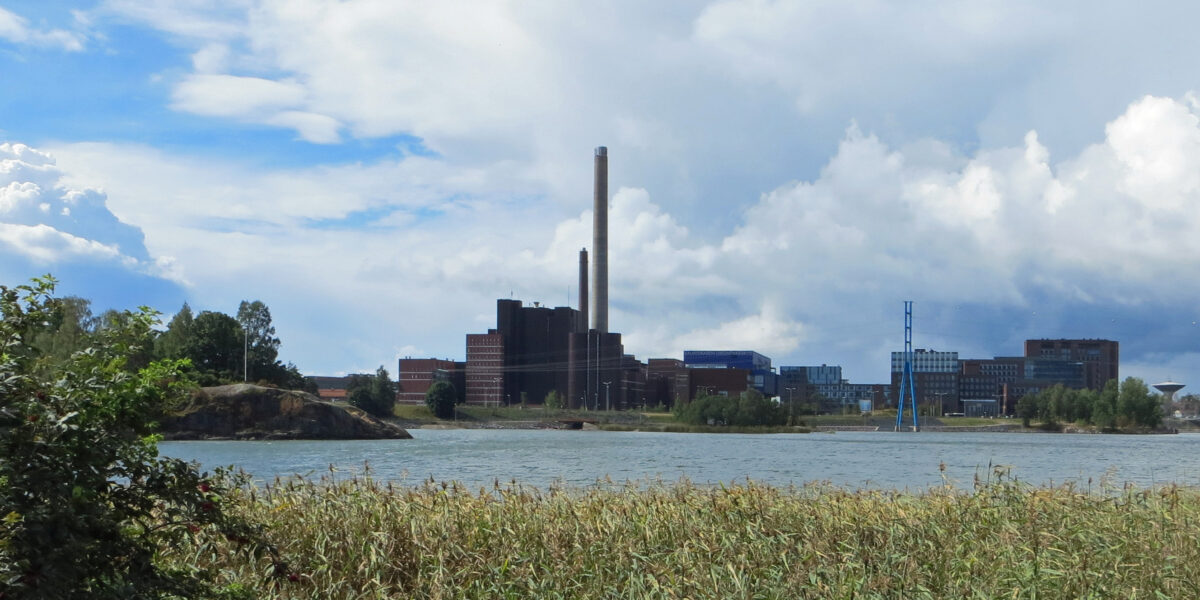The volume of electricity produced in Helsinki will decline substantially when Helen closes its coal-fired combined heat and power plants in Hanasaari and Salmisaari in the coming years.
At the same time, the city’s electricity consumption will increase in step with its rising population and the electrification of transport and heating.
“In addition, we need to think about the technical functionality of the grid and how to integrate it into the increasingly dense urban fabric. We must also pay special attention to land use,” says Markku Hyvärinen, Director of Business Development at Helen Electricity Network.
Economic efficiency depends on cooperation
Fingrid, the City of Helsinki, and Helen Electricity Network have been working together for a long time to safeguard the electricity supply and promote sustainable solutions for the electricity transmission system. A study that was carried out a few years ago led to the parties making a joint planning agreement.
Fingrid and Helen Electricity Network provide the technical knowledge and implementation, and the City of Helsinki lends its expertise in urban planning and land use planning.
“It is a matter of reconciling the objectives related to the urban structure with the needs of the electricity network in a far-reaching way,” summarises Aki Laurila, Manager, Grid Planning at Fingrid.
Eija Kivilaakso, senior advisor in land use in technical general planning at the City of Helsinki, describes the parties’ collaboration as essential and seamless. Hyvärinen from Helen Electricity Network emphasises the rationality of the arrangement.
“Economically efficient solutions depend on cooperation.”
Construction of a new cable link to be brought forward
The largest development project is a new 400-kilovolt cable link from Länsisalmi in Vantaa to the energy block in Viikinranta, Helsinki, which is the site of the current Viikinmäki substation.
“We originally planned to build the new 400 kV cable by 2035, but land use and electricity requirements have brought the schedule forward. We are now planning to complete the 400-kilovolt cable link by the end of 2026,” Aki Laurila says.
A solution was developed to enable the cable link project to be carried out earlier than first planned, with principles based on a previous study.
The earlier completion will allow Helen Electricity Network and the City to continue delivering on their plans for Northwest Helsinki without any obstacles.
Planning of the Western Boulevard City district is ongoing
“When the 400-kilovolt cable link is finished, we will convert the 110-kilovolt high-voltage overhead lines running along Vihdintie to an underground connection. We will also move the current substation functions in Pitäjänmäki to a new site,” says Hyvärinen.
Helen Electricity Network will make savings on its investments in Northwest Helsinki, as Fingrid’s new cable link from Vantaa to Helsinki will strengthen the electricity network.
“We will get by with less power and excavation work instead of blasting a cable tunnel,” Hyvärinen explains.
Converting five kilometres of overhead lines to underground cables will free up land for infill construction and the planning of the Western Boulevard City. Housing, transport connections, and services will be created for about 14,000 residents in the area around Vihdintie and Huopalahdentie by the end of the decade.
Looking to the future
Kivilaakso and Hyvärinen say that Fingrid is making a necessary contribution to the functionality of the electricity network in Helsinki.
“Fingrid’s experts are specialists in their fields, and they can quickly adapt to an unfamiliar urban environment,” they say.
Expertise will continue to be required as the green transition in energy production and consumption will go on for decades. Lauri Ala-Mutka, Specialist at Fingrid, is tasked with analysing the adequacy of the electricity network and main grid in the Helsinki metropolitan area.
“Cities provide us with their forecasts of electricity consumption and production. We use these to forecast the need for electricity transmission as far ahead as 2040, and the forecasts are updated when necessary. Grid planning is an ongoing process.”
In Helsinki, the main issues for Fingrid are the sufficiency of the 400-kilovolt connections and the main transformers. Ala-Mutka points out that Fingrid dimensions the main grid to withstand the loss of any critical component.







